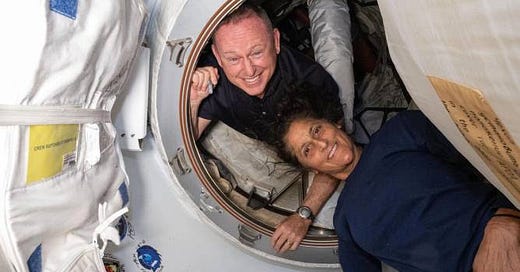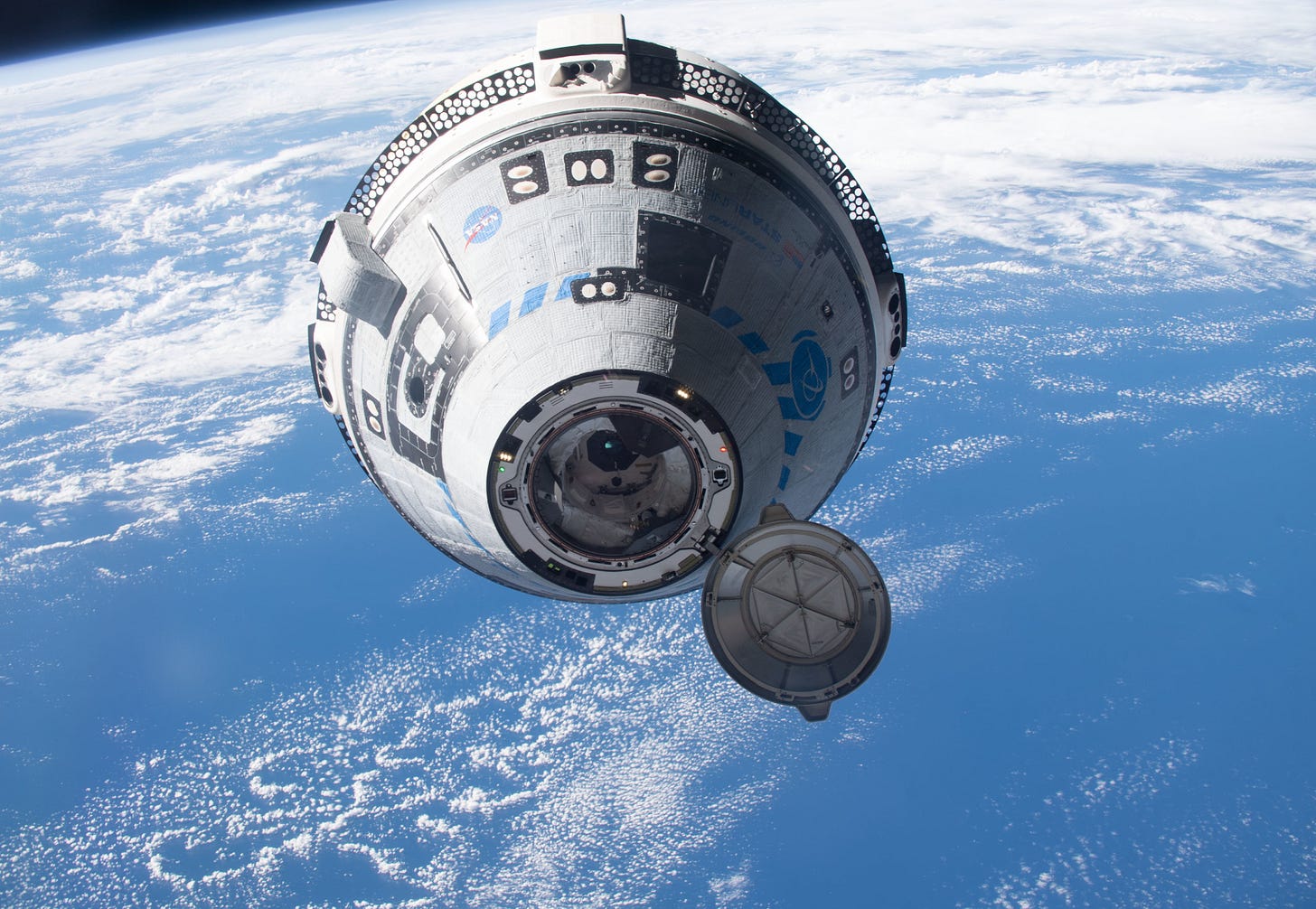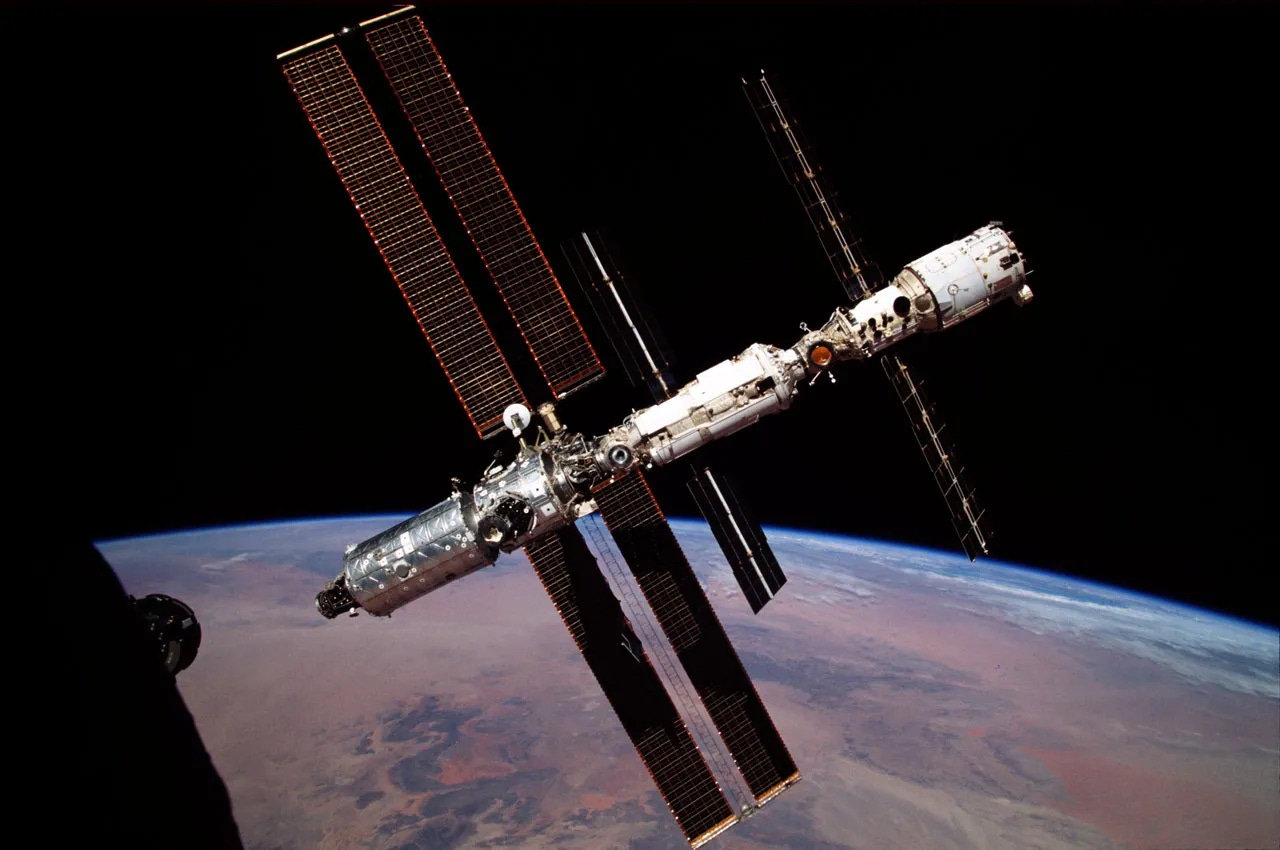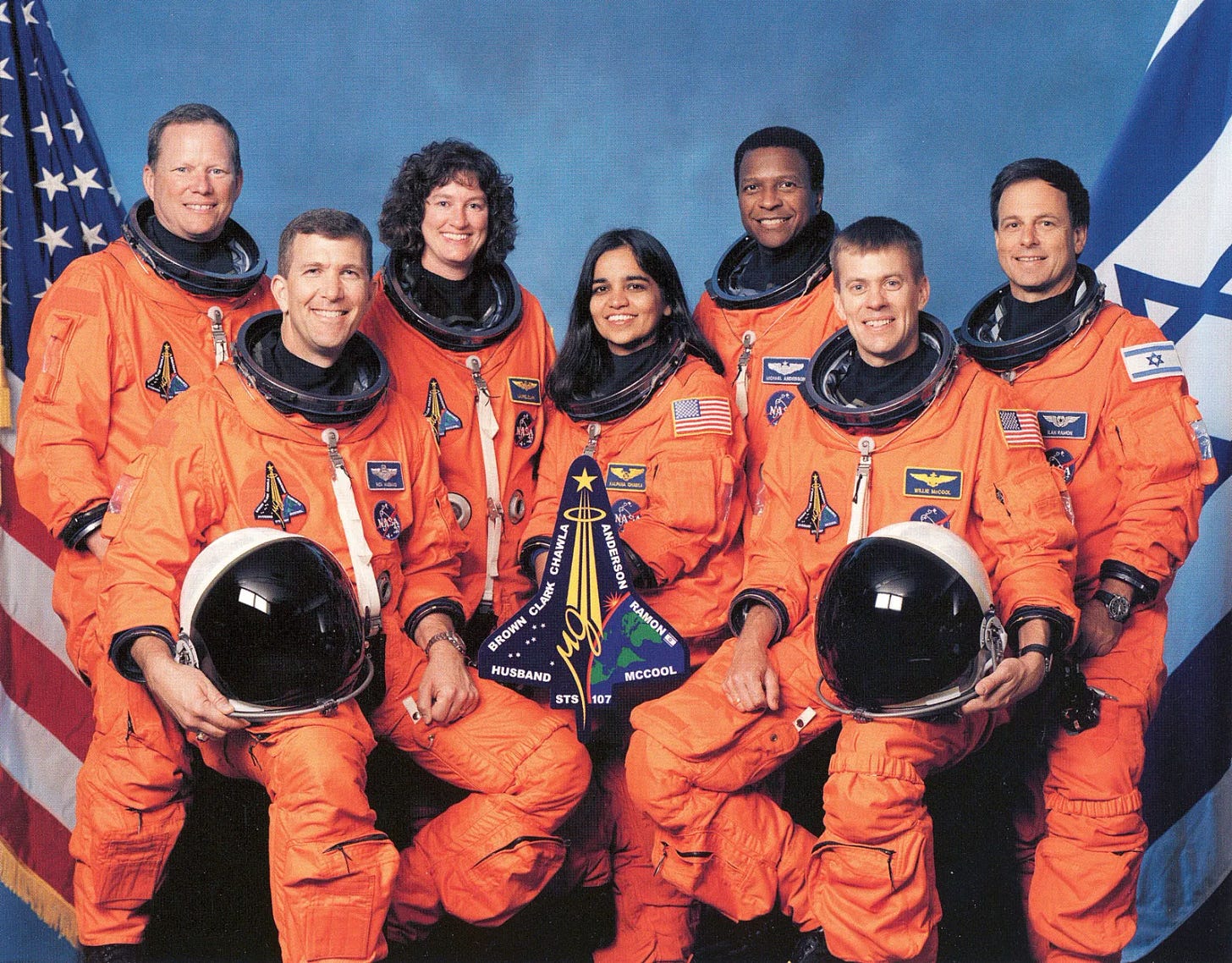Two NASA Astronauts, Including Sunita Williams, Stranded in Space: No Immediate Risk
Two NASA Astronauts Stranded on ISS Due to Boeing Starliner Issues.
Stranded in Space?
NASA astronauts Barry "Butch" Wilmore and Sunita "Suni" Williams find themselves unexpectedly stranded on the International Space Station (ISS) due to critical issues with Boeing's Starliner spacecraft. This situation stems from persistent problems that have plagued Boeing's spacecraft development program, leading to numerous glitches during testing, inordinate delays, and huge cost overruns. This incident comes on the heels of recent issues involving Boeing aircraft—such as a door plug falling off and an exterior panel detaching—which have raised serious concerns about the aerospace giant's manufacturing processes and safety protocols, even though these incidents did not result in any fatalities.
The Mission and Sunita Williams’ India Connection
Wilmore and Williams embarked on their mission to the ISS aboard Starliner on June 5, 2024, marking a significant milestone for Boeing, which has experienced numerous delays and setbacks over the years. The astronauts docked with the ISS the following day, with the initial plan to return to Earth on June 14 after an eight-day space sojourn.
Sunita Williams has a strong Indian connection1 through her father, Deepak Pandya, who hails from Jhulasan village in Gujarat, India. Williams takes great pride in her Indian heritage and has carried it with her into space. During her current mission aboard the Boeing Starliner in June 2024, she reportedly packed samosas, a popular Indian snack. Williams is the second American woman of Indian origin to venture into space, and her achievements have been recognized by the Indian government with the Padma Bhushan, India's third-highest civilian award, which she received in 2008.
Unforeseen Challenges
a.) Helium Leaks and Thruster Malfunctions
Despite the successful docking, complications soon emerged. Helium leaks were detected in the propulsion system helium tanks, although they posed no immediate safety risk. More concerning were the malfunctions of Starliner's thrusters; five out of twenty-eight maneuvering thrusters shut down unexpectedly during docking, with four being recovered and one remaining non-functional. These issues have led NASA to repeatedly delay the astronauts' return.
b.) Indefinite Delay Announcement
On Friday, 21st June, NASA announced an indefinite delay, stating that Wilmore and Williams would not be able to return until at least July. This extension is necessary to ensure thorough verification of Starliner's systems for a safe reentry and landing at White Sands Space Harbor in New Mexico. However, NASA has assured that Starliner could return immediately in an emergency if required.
Extended Stay and Ongoing Activities
a.) Making the Most of Extra Time
During this extended stay, Wilmore and Williams are actively engaged in conducting spacewalks and other critical tasks on the ISS. They are scheduled for spacewalks today and on July 2, while NASA gathers valuable data on Starliner's performance during an extended mission. This information will be instrumental for future journeys, some of which are planned to last up to six months, enhancing the understanding and reliability of the spacecraft for longer-duration missions.
b.) Limitations on Starliner's Docked Time
Despite the productive use of their extended time, there are limits to how long Starliner can remain docked. The spacecraft was designed for stays of up to 45 days, meaning the latest possible departure date is July 21. Exceeding this period could present additional challenges and concomitant risks.
Current Issues and Troubleshooting Efforts
a.) Detailed Analysis
NASA is focused on understanding the root causes of the helium leaks and thruster malfunctions. The helium leaks, while not immediately dangerous, need to be understood for long-term safety and reliability. The thruster issues, particularly the one thruster that remains non-functional, require in-depth analysis to prevent future occurrences.
b.) Confidence in Starliner
Despite these technical challenges, both NASA and Boeing remain confident in Starliner's ability to safely return the astronauts to Earth. Ongoing troubleshooting efforts aim to resolve these issues promptly, ensuring the spacecraft's readiness for a secure reentry.
International Cooperation: ISS and the Starliner Milestone
The International Space Station (ISS) exemplifies international cooperation in space, with contributions from the United States, Russia, Japan, Canada, and several European countries. Continuously occupied since November 2000, the ISS supports rotating crews conducting scientific research and technology experiments. The recent docking of Boeing's CST-100 Starliner, named "Calypso," on June 6, 2024, marked its first crewed test flight. NASA astronauts Butch Wilmore and Suni Williams joined the Expedition 71 crew, led by Russian cosmonaut and ISS commander Oleg Kononenko, along with other Russian cosmonauts and NASA astronauts.
During their six-day stay, as originally intended, NASA astronauts Wilmore and Williams, along with their crewmates, conducted experiments on neuro-degenerative diseases, space botany, microgravity's effects on fluid shifts, and algae-based life support systems, while also performing routine maintenance and public outreach. The Starliner's arrival and docking was expected to signify a major milestone for Boeing, aiming to provide NASA with a second commercial crew transportation system alongside SpaceX's Crew Dragon, reinforcing the ISS's legacy of international collaboration and scientific advancement. However, the glitches with Starliner have cast a long shadow, raising serious safety concerns that are unacceptable in space travel.
Historical Context of Spaceflight Challenges
The Challenger and Columbia disasters were two tragic events in NASA's Space Shuttle program, resulting in the loss of 14 astronauts. On January 28, 1986, just 73 seconds after liftoff, the Space Shuttle Challenger broke apart due to an O-ring seal failure in the right solid rocket booster, allowing hot pressurized gas to leak and causing the external fuel tank to explode. The seven crew members aboard, including teacher Christa McAuliffe, were killed.
Seventeen years later, on February 1, 2003, the Space Shuttle Columbia disintegrated upon re-entry into the Earth's atmosphere after completing a 16-day science mission. A piece of foam insulation had broken off the external fuel tank during launch and damaged the leading edge of the orbiter's left wing, allowing hot atmospheric gases to penetrate and cause the shuttle to break up. All seven astronauts on board, including India-origin astronaut Kalpana Chawla, perished. Both disasters led to the grounding of the shuttle fleet for years as NASA investigated the causes and implemented changes. The Columbia disaster directly contributed to the retirement of the Space Shuttle program in 2011.
Broader Implications and Future Prospects
a.) Starliner’s Development Struggles
The current issues with Starliner are the latest in a series of setbacks for Boeing's spacecraft development, which is significantly behind schedule and over budget. This situation contrasts with rival SpaceX— an Elon Musk compoany— which has been successfully flying NASA astronauts on its Crew Dragon spacecraft since 2020.
b.) Commitment to Commercial Crew Vehicles
Despite the difficulties, NASA is committed to maintaining two commercial crew vehicles for redundancy and competition. This strategy underscores the importance of having multiple reliable options for crew transportation to and from the ISS.
Summing Up and Looking Forward
While the unexpected extension of Wilmore and Williams' mission presents challenges, it also offers opportunities for valuable research and system validation. The ongoing efforts to resolve Starliner's technical issues highlight the complexities of space exploration and the resilience required to overcome them. NASA's commitment to safety and redundancy ensures that the astronauts' eventual return will be as safe and efficient as possible.
As the two NASA astronauts remain "stranded" on their extended trip on the ISS, we back home on Earth can only hope and pray, with special prayers from India, where their "daughter" is one of the two astronauts involved. Despite the challenges, NASA remains robustly optimistic about their safe journey back to the mother planet.
If you believe this article would interest someone you know, please feel free to share it anonymously (for us), using any platform that you prefer.
Sunita Williams has a strong Indian connection through her father's side of the family. Her father, Deepak Pandya, hails from Jhulasan village in the Mehsana district of Gujarat, India. Williams proudly embraces her Indian heritage and has maintained a strong connection to her roots. She has been warmly welcomed by the Indian government and people during her visits to the country.
In previous space missions, Williams has expressed her appreciation for her Indian heritage, saying, "I really appreciate my Indian heritage and was glad I could bring part of it with me to space." During her current mission aboard the Boeing Starliner, which launched on June 5, 2024, Williams reportedly packed samosas, a popular Indian snack, marking a connection to her 'desi' roots.
Sunita Williams is the second American woman of Indian origin to venture into space, following Kalpana Chawla, who tragically lost her life aboard the Space Shuttle Columbia in 2003. Williams has been recognized by the Indian government for her achievements, being awarded the Padma Bhushan, India's third-highest civilian award, in 2008.
In summary, while Sunita Williams was born and raised in the United States, she has a strong connection to India through her father's side of the family. She takes pride in her Indian heritage, has visited the country, and has been honored by the Indian government for her accomplishments as an astronaut.








